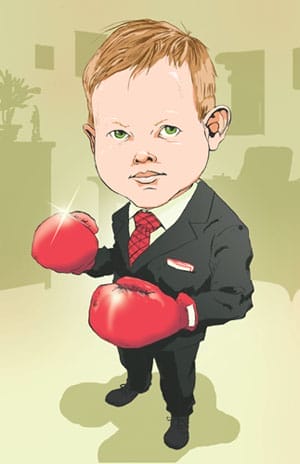Few CEOs today would admit to being “ruthless,” much less brag about it. But plenty of them are still operating from that old-school playbook.
The classically ruthless leader is a take-no-prisoner competitor, a scorched-earth cost-cutter, even a push-the-ethical- envelope negotiator. With all the power in his hands, he leads from the top, with a simple message: “Get it done.”
If this sounds like you, stop now.
When success requires speed, innovation, collaboration and a business culture that motivates everyone, the old ruthless won’t work. Former Pfizer chief Jeffrey Kindler’s taste for confrontational interrogation (instead of careful listening and constructive dialogue) didn’t help Pfizer’s drug pipeline. Carol Bart’s bluster and proclamations couldn’t turn Yahoo! around.
The challenge for leaders is clear across industries. As the demands of business change, companies are redefining their top jobs. For example, Ad Age identified eight major CEO changes in the biggest advertising networks within an 18-month period. Traditional agency CEO s, once rainmakers, are exiting. Enter the CEOs who are business and digital strategists and exceptional collaborators and partners. I’m not saying that business leaders shouldn’t be tough, decisive or demanding.
But I’m seeing a CEO that practices a “new ruthless.” They hold onto the top jobs and build dynamic companies; they are passionate about transformation and insist that their companies be relentlessly open to change.
Watch CEOs like Starbucks’ Howard Schultz, Laura Desmond of Starcom/Media Vest and Irene Rosenfeld of Kraft, and you will recognize it. The new leader demands ruthless honesty, ruthless focus and—although it may sound contradictory—ruthless flexibility. And we need to add one more ruthless: a ruthless attention to people. All of these are critical to success.
Ruthless Honesty
Today as a CEO, you have to be ruthlessly honest—especially with yourself—and build a culture that demands and supports candor from everyone. If you want to be smart and fast, you need the unvarnished facts and the best of everyone’s thinking.
Of course, candor doesn’t preclude diplomacy or compassion. It’s about transparency. If you or parts of your organization are operating in the dark, politicking takes up the time and energy that you need to focus on the business. When you are honest, and show it, you signal confidence in yourself and your people, and set a high bar for the conversation.
Ruthless honesty isn’t just a powerful tactic; it’s part of a bigger, new ruthless strategy.
Ruthless About People
Classically ruthless leaders put their pocketbooks first. Employees trail well behind in this model. These CEOs have little patience for the “softer” side of business.
The new ruthless CEO believes that no one prospers unless he has the right leaders in place and a culture that supports their mission. Aggressive growth only happens when the business’ leaders think the same way about innovation, collaboration, priorities and the external forces that affect their business. Why? Because today’s CEO s need to share power and delegate critical initiatives.
Kraft’s Rosenfeld told me that she resists jumping on a vital hire, no matter how intense the pressure to fill a spot. Finding the right person is that important. Leaders like Rosenfeld put a similar premium on cultivating relationships beyond the usual circles to innovate and to anticipate new opportunities and risks. You must be involved—informally and in partnerships— with a wide network of smart people who may not even have a direct interest in your business.
Ruthless Focus
Serial CEO Jack Keenan, founder and CEO of Grand Cru Consulting Ltd., talks about having a “ruthless focus,” but he doesn’t mean single-mindedness. For Keenan, ruthless focus means doing the rigorous strategic work and setting the right priorities. You should be able to say, “These four or five things will achieve our aggressive growth strategies. We need to structure the business and align our resources to focus on these.”
That approach is a tremendous asset for today’s CEO s who must think globally and locally, and be sensitive to every facet of their business. They need to be alert to a tsunami of information and, at the same time, screen out distractions.
Ruthless Flexibility
When a leader’s first instinct is to resist change, beware. He won’t compete successfully for long and won’t be able to transform anything. Neither will he attract and keep the best talent or excite younger generations—both employees and consumers—who want to be heard.
Leaders who are genuinely flexible are more able to drive innovation and do what competitors can’t. They value adaptability and openness. Entrenched businesses often wait until they’re on the brink to admit how much has really changed (think RIM). Ruthless flexibility demands that you not get stuck in your own story.
Leaders set the tone for everyone around them. Innovative strategies, powerful cultures and aggressive results start with the leaders’ behavior—people need to see and hear their commitment to honesty, people, focus and flexibility. Leaders who succeed today embrace the new ruthless.
Roslyn Courtney, WG’76, is CEO and president of LaserBeam Consulting. Previously, she held senior leadership positions at Citigroup, The New York Times Company, Primedia’s Consumer Media Group and Kraft General Foods.

























